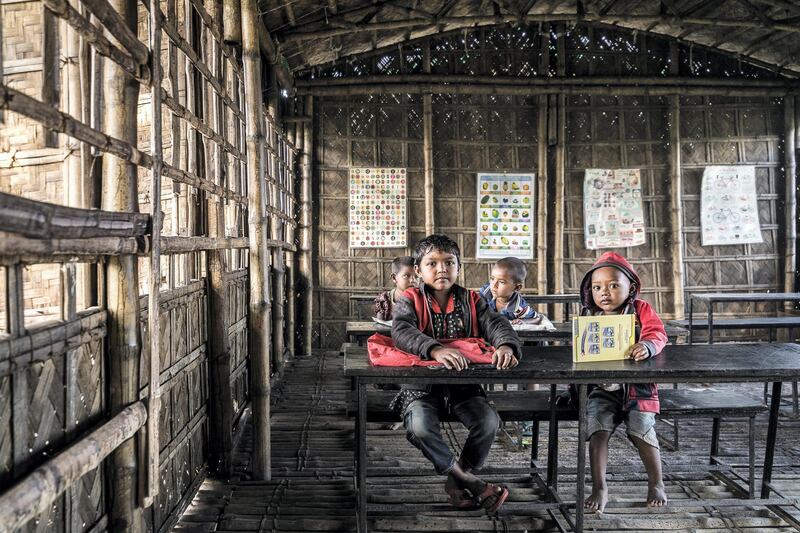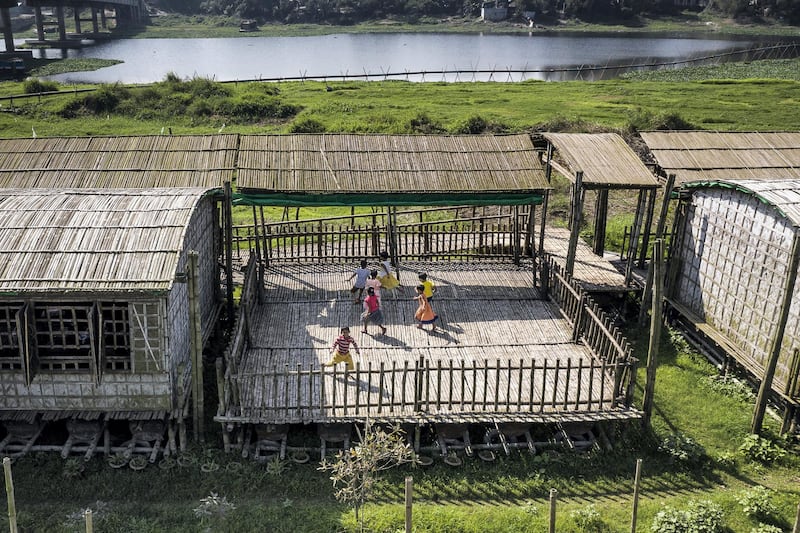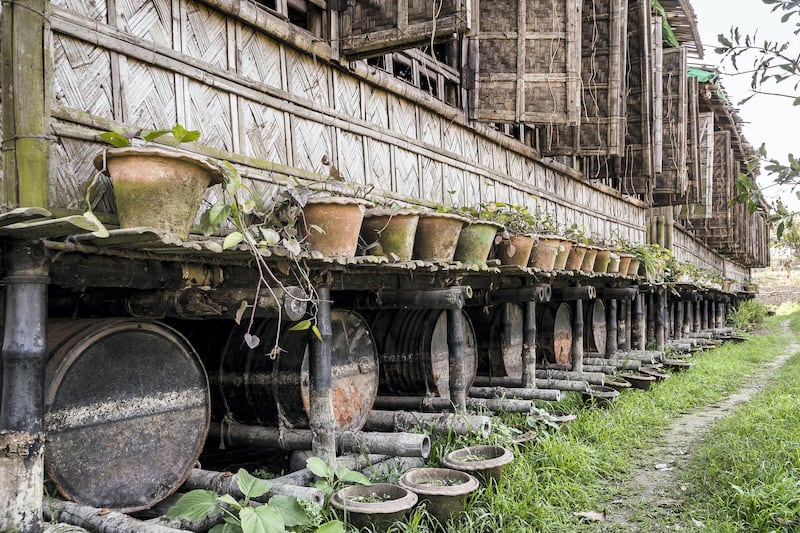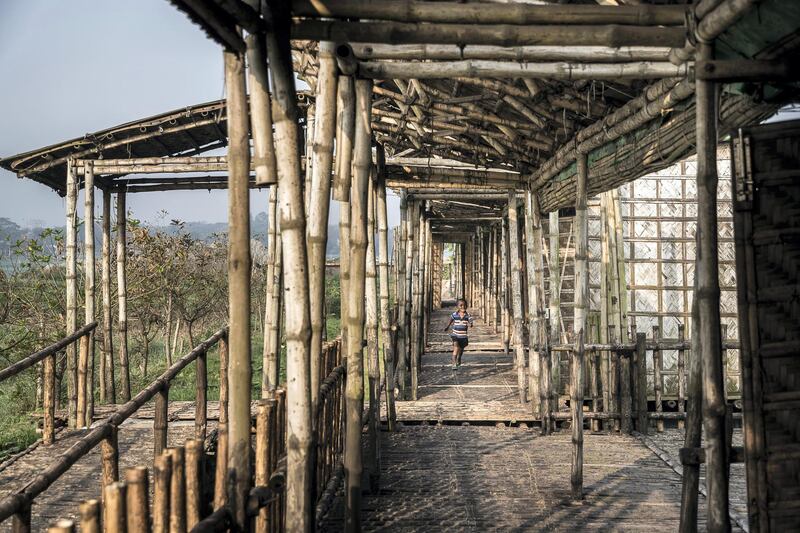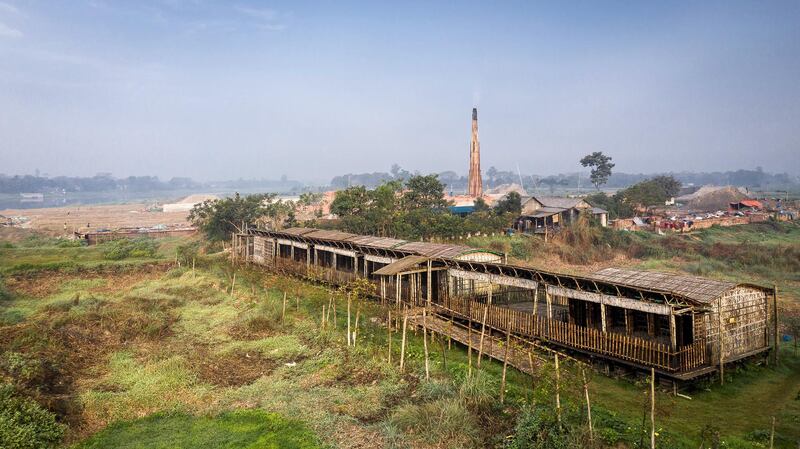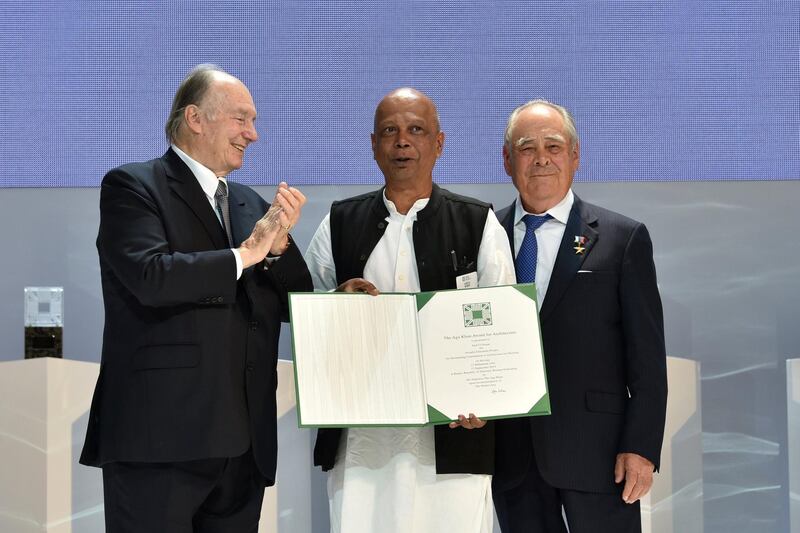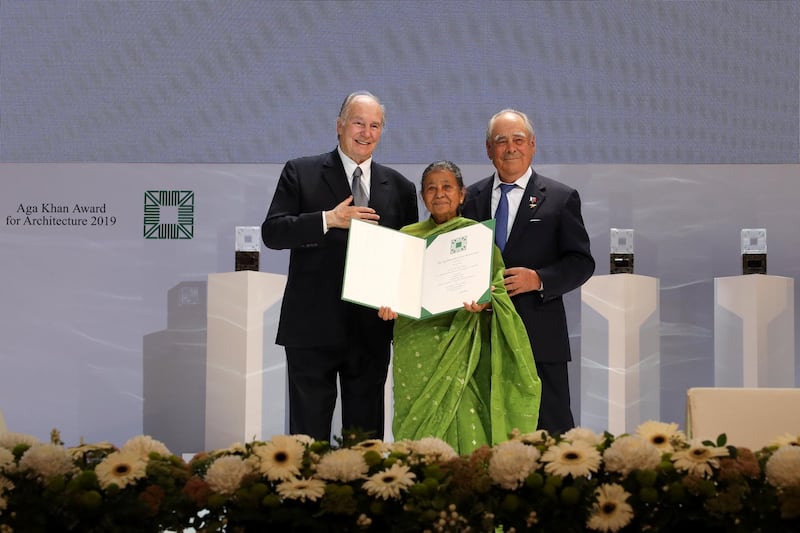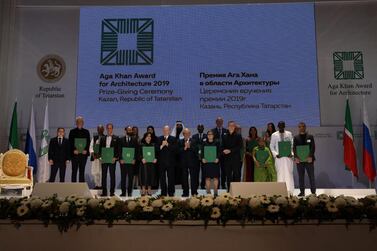Imagine buying a plot of land on which you hope to build a school, only to visit one day and find that plot of land under three metres of water. You'd probably be furious with whoever it was that sold you the land and then try never to think about your expensive mistake again.
Razia Alam took another view. "I'm not simply going to look at the water," she says, defiantly. "My plan is a school. I want to see the children get some benefit from my dream."
The water, though unwelcome, was not the end of this dream, simply the start of a different one. Alam, a small Bangladeshi woman who left her home country at the age of 18 and who has worked for 40 years as a teacher in the UK, purchased the land, which is about 30 kilometres outside Bangladesh's capital Dhaka, in 2011. "Dhaka is very expensive," she says. "You can't touch it."
When Alam first went to see this land, it was the dry season, so it looked perfectly OK for building on. Only later was it revealed that for up to five months of the year, during the monsoon season, the whole area would be under water. The next time she went to see it, after the documents had been signed, there was a trawler chugging over the supposed site for her school.
Undeterred, Alam consulted her nephew, architect Saif Ul Haque. "If I brought in another architect, I knew they would look at me and say, 'She's a mad woman,'" says Alam. "So I went with a little bit of confidence that my nephew would not think I was mad."
Nevertheless, Ul Haque was still fairly shocked. "We were standing there on the bridge and he said, 'Auntie, I can see only water,'" says Alam. "I can still hear that phrase."
There were various options available to Alam and her nephew. The obvious solutions were to build the school on a stabilised mound or to elevate it on stilts. Alam was not impressed by either. "It didn't look nice to me," she says. "I said, 'No, do something that will float.'" And that is exactly what Ul Haque did. The result is Arcadia Education Project, a beautiful school with three classrooms, an office, a bathroom and an open-topped platform built largely from bamboo, used tyres and 136-litre steel drums. The school was constructed by local builders, so development cost only $50,800 (Dh186,600).
This month, Alam and Ul Haque were invited to Kazan, Russia, where they received an Aga Khan Award for Architecture.
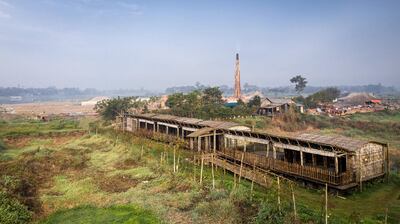
Arcadia Education Project was one of six winning designs to be selected from 380 nominations. "All the projects I work on are dear to my heart, but this one has brought me so much attention," says Ul Haque. "I always believe a project has to offer something new to make things better – quality of environment, quality of architecture – but Arcadia Education Project presented further things to resolve, which needed a native solution."
The design is both strikingly simple and effective. Bamboo posts have been sunk two metres into the ground and serve as anchoring points to which each of the school's eight rectangular structures is attached by rope. The school is then kept afloat during the monsoon season by substructures of the steel drums, housed within bamboo cages. In the dry months, these cages sit on the ground, where sand, earth, brick infill and used tyres, attached to the ground, provide stability and cushioning.
The jury of the Aga Khan Award for Architecture described the project as “modest and direct”, adding that it “strives to elevate people’s lives, contributes to social and economic development and provides a pathway to solutions for the global issues of rising water levels and access to education in rural communities”.
As a result, traditional methods were used in the construction of the school, which was built almost entirely with hand tools. Added to this, most of the materials were waterproofed using a liquid made from boiled local fruit, an ancient Bangladeshi trick for preventing rotting. "Our consumer culture has made us go for new things at the expense of materials and methods that could still be further used," says Ul Haque. "OK, we need technological advancement, but not at the expense of the environment. I wanted to propose a model that was forward-looking and which, at the same time, borrowed and depended on what we have already learnt. So far it has worked."
Arcadia Education Project was built by a local carpenter who Alam has known for many years and who helped to construct her kitchen. He did not understand what Alam calls "the architects' language" – decimal measurements, for example – so when he first arrived to discuss the project with Ul Haque, he didn't say a word. He simply observed. Three days later, the carpenter returned and said that he could do it – but only if Ul Haque made him a model from which to work. Ul Haque also drafted in bamboo specialists from nearby villages. "The participants weren't scientists, they were local craftspeople," he says.
And what about working for his aunt? Was there ever any tension? "I was a little apprehensive about the situation because when you work for a relative …" says Ul Haque, his voice trailing off. "But somehow I felt that my aunt, a very enthusiastic and courageous person, had come to me to get this project designed, so I should not say no. I took it as a challenge, not only to work in that particular landscape but to work with my aunt."
Ul Haque's broad grin as he explains this suggests he has enjoyed every minute of it.
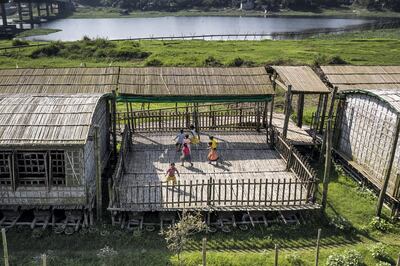
For all its architectural intrigue, though, it is important not to lose sight of the reason Arcadia Education Project exists. It is here because of Alam's single-minded determination to build a school for local children, many of whom would otherwise be excluded from lessons, since free education only starts at the age of 6 in Bangladesh. "Most of the children's parents are domestic or factory workers, so the children are left out of education because we don't have a nursery system here," says Alam.
Arcadia Education Project is for children aged between 3 and 5 and it can hold a maximum of 20 pupils in each classroom. Every child is provided with breakfast, while Alam subsidises children from the poorest families, so they can afford to buy uniforms and shoes. There is a vegetable patch so the children can grow food to sell and Alam is also developing a playground. When her pupils move on at the age of 6, Alam keeps a close eye on their progress. "If my children are not doing well, I want to know why," she says. "I will address that problem.
"Children who are deprived of, I wouldn't say luxury, but from the pleasures of life need a good education. If you have a good education, that will provide you with a better job ... even if they do not become a highly qualified person but have some basic knowledge, people do not take advantage of them. Even if they become a labourer, they know will how to lead a decent life."
